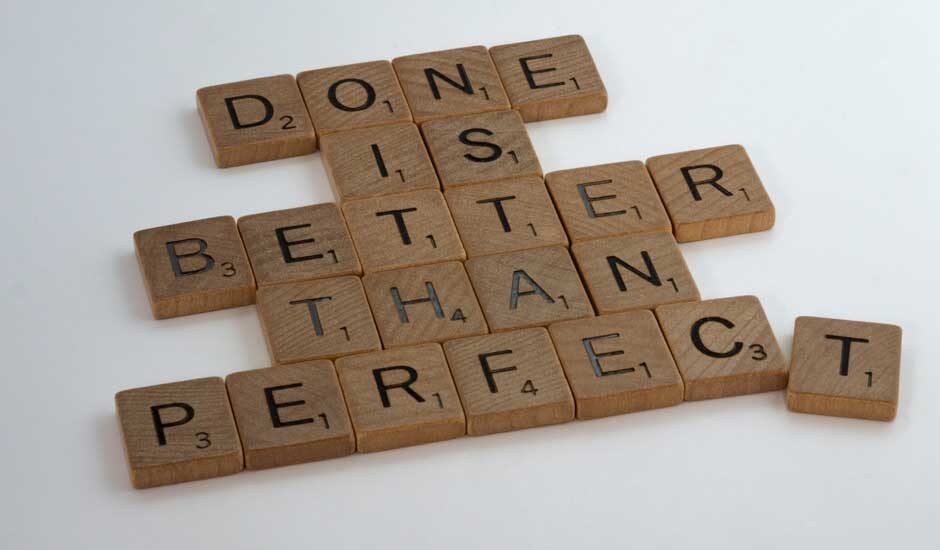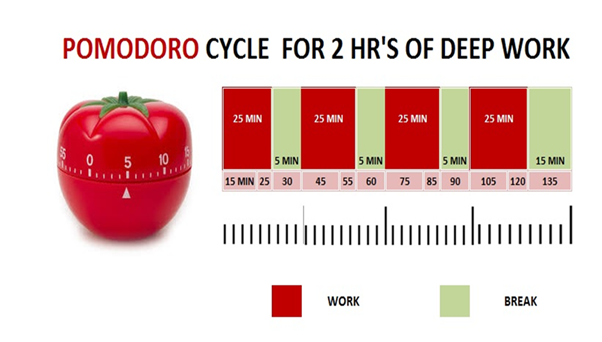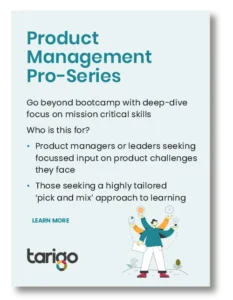
In product we often work with cross functional teams that we don’t have direct authority over, and it makes trust so needed and important for the way we work in our teams. This paper will talk about how trust is built by being straight forward and delivering on promises; doing what we say we are going to do, when we say we are going to do it. But, we all know that is sometimes easier said than done, because what we have to do each day often exceeds the time we have allotted to it!
So, I’d like to introduce you to the concept of timeboxing. Timeboxing is a simple yet effective time management technique that involves allotting a fixed, maximum unit of time for an activity in advance, and then completing the activity within that time frame. The concept was first introduced by James Martin, the author of the book Rapid Application Development, as a part of Agile software development. It’s a great goal-oriented time management strategy to help you increase productivity and reduce procrastination. When you create a “timebox,” you’re setting a goal to finish a particular task within a certain time frame.
You can use timeboxing to schedule individual tasks, help your team get organized, or manage meetings more effectively. All three timeboxing strategies pull from the same methodology. But no matter what you’re using timeboxing for, the first step is to decide if you’re setting a “hard” or “soft” timebox.
“Hard” or “soft” which is best?
Before creating a timebox, you first need to decide if it’s a hard or a soft timebox.
A hard timebox means your task or activity must stop when your timebox is up. Even if you haven’t completed the task. Creating hard timeboxes can be particularly helpful if you’re prone to perfectionism and you frequently toil over work that’s probably good enough. In a team setting, creating a hard timebox can ensure you address every task in your backlog similarly, during a meeting, using hard timeboxes can help you hit every item on your agenda. It’s what you may do in workshops, and what we recommend you use to complete missions on Product Bootcamp!
A soft timebox on the other hand, is more flexible. In a soft timebox, the end of the timebox is a suggestion that you should wrap up what you’re doing and move on to the next task. You can use soft timeboxes for complex work, especially if you aren’t sure exactly how long the task will take when you get started. As a team, creating soft timeboxes gives your collaborators more flexibility, while still helping everyone align on when work should be completed. During a meeting, using soft timeboxes can help you stay on track without interrupting the conversation, the way a hard timebox can.
Deciding whether to set a hard or soft timebox depends on what your work goals are, and you don’t just have to use one or another. At the beginning of each timebox you set, decide if it’s a hard or soft timebox, and hold yourself to that expectation accordingly.
How to get started on timeboxing?
To set up a timebox, start by identifying a task or body of work that you need to get done. Then:
- Figure out how long that body of work should take.
- For personal or team timeboxes, find a time in your calendar to do that work.
- Decide if it’s a hard or soft timebox.
- Start the timebox.
- Avoid distractions during the timebox in-order to maintain focus on the task at hand.
- Finish, then take a break.
Other tips to consider.
Use things like “Do not Disturb” and focus without distractions.
If you are doing big things and want to use timeboxing start by breaking that work into smaller components, like sprints. Timeboxing is just an effective way to break down and re-think tasks, sometimes it’s hard to find time to do bigger things. By breaking this work down into smaller components, you can avoid procrastination and make the task feel more manageable, and make small progress over a period of time.
Set a timebox time, and stick to it! It can be tempting to rearrange, reschedule, or cancel your timeboxes, but try to avoid this as much as possible. Once they’re set, think of timeboxes as meetings you’ve scheduled with yourself. Just like you wouldn’t cancel a meeting with a team member last minute unless you absolutely had to, you shouldn’t cancel a timebox either.
Set it as focus time in your schedule, so teams can see it and are less prone to ping you with small things.
Set a timer, where you can see it! In the case of a hard timebox, plan to move on to the next task once the timer is up. If you haven’t finished what you’re working on, you can come back to it in a later timebox.
The Pomodoro technique
“Pomodoro” mean tomato in Italian and it’s modelled on small tomato shaped timer. It was developed by Francesco Cirillo in the 1980s. It uses the tomato shaped kitchen timer to break work into intervals, typically 25 minutes in length separated by short breaks. Each interval known as a pomodoro. It’s been popularized by apps and websites, and it’s used a lot in pair programming*.

Want to Give it a Go!
Try Pomofocus Pomodoro Timer Online – Pomofocus
Pomodoro techniques is great for tackling bigger pieces of work, that are sometimes hard for us to start, or that we can put off starting.
Here’s how simple the Pomodoro Technique is
- Pick one task.
- Set the timer and work for 25 minutes.
- Stay focused on the task until the timer rings.
- Take a 5 minute break.
- Do 4 sets and then take a 15 – 30 minutes break.

Time management is a strange concept because we can’t manage time, but we can think of time management strategies as a way to maximize our effectiveness and make the biggest impact with your work, and gain trust, by delivering against what we said we would accomplish and complete.
We mentioned timeboxing with teams, here at Tarigo we do Team Scrums. Most of us will recognize scrums, as most frequently used by software development teams, but it’s principles and lessons can be applied to all kinds of team work. We like Team Scrums because we don’t have a physical office any longer, and whilst we are on many structured meetings with our internal Tarigo teams, we miss on the informal ‘being together’, and we find our Team Scrums allow us to learn through experience and self-organize while working on a problem together.
I was using the technique just the other day with a colleague (Angie). She needed help on a power point presentation, as she was working on her power point, I was working on something else, Angie was asking me questions about the power point as she went on, asking my advice and how to do things. We both got our work done, Angie got the help she needed, and we had a little chat as we went on.
Our Team Scrums work like this;
- We set regular Team Scrums up in our team calendars.
- Team members attend a scrum if they can, and it would be useful to them.
- At the beginning of the meetings each member on the call sets their intention of what they want to achieve in the Team Scrum.
- We keep our cameras on, and chat as we go about family work or ask for help or advice on the task we are doing.
We are also recommending time boxing on our Pro Series training, we sometimes help teams by setting “Complete your mission sessions” into delegates diaries. Delegates rock-up and set their intention, and declare their intention to the team on the call, and then they get their heads down and work on their mission. We usually have one check-in half way through and then at the end people declare how they have done and what is still left to do.
So, in summary timeboxing is awesome for;
- Being more intentional about your work, more mindful about where you’re spending our time.
- Working with increased focus. By setting aside time to work, you’re also telling your brain that this is valuable focus time. This can help you improve focus and, by extension, productivity.
- Reducing multitasking. The human brain can’t multitask. Whenever we switch tasks, our brain needs to “re-upload” the information for that task—and that takes precious time and energy, even if you don’t realize it.
- Increasing motivation. Set a goal for yourself: to complete a particular task within these pre-set time constraints. Even if you don’t always succeed, giving yourself something to work towards can be motivating.
- Establishing a predictable work schedule; gain a clearer sense of what your day will look like through scheduling your timeboxes in your calendar, you can clearly see when you’ll accomplish which tasks.
- Reducing perfectionism; don’t agonize over the small stuff timeboxing operates off of the principle of progress over perfection. Once your timebox is up, you need to move on. If you still need more time, arrange another timebox or decide whether it’s good enough.
Trust is built when we deliver on our promises so, only promise what you can get done, and use an effective task management system like timeboxing, or give the Pomodoro technique a go, and deliver as you promised, our great reputations depend on it!

